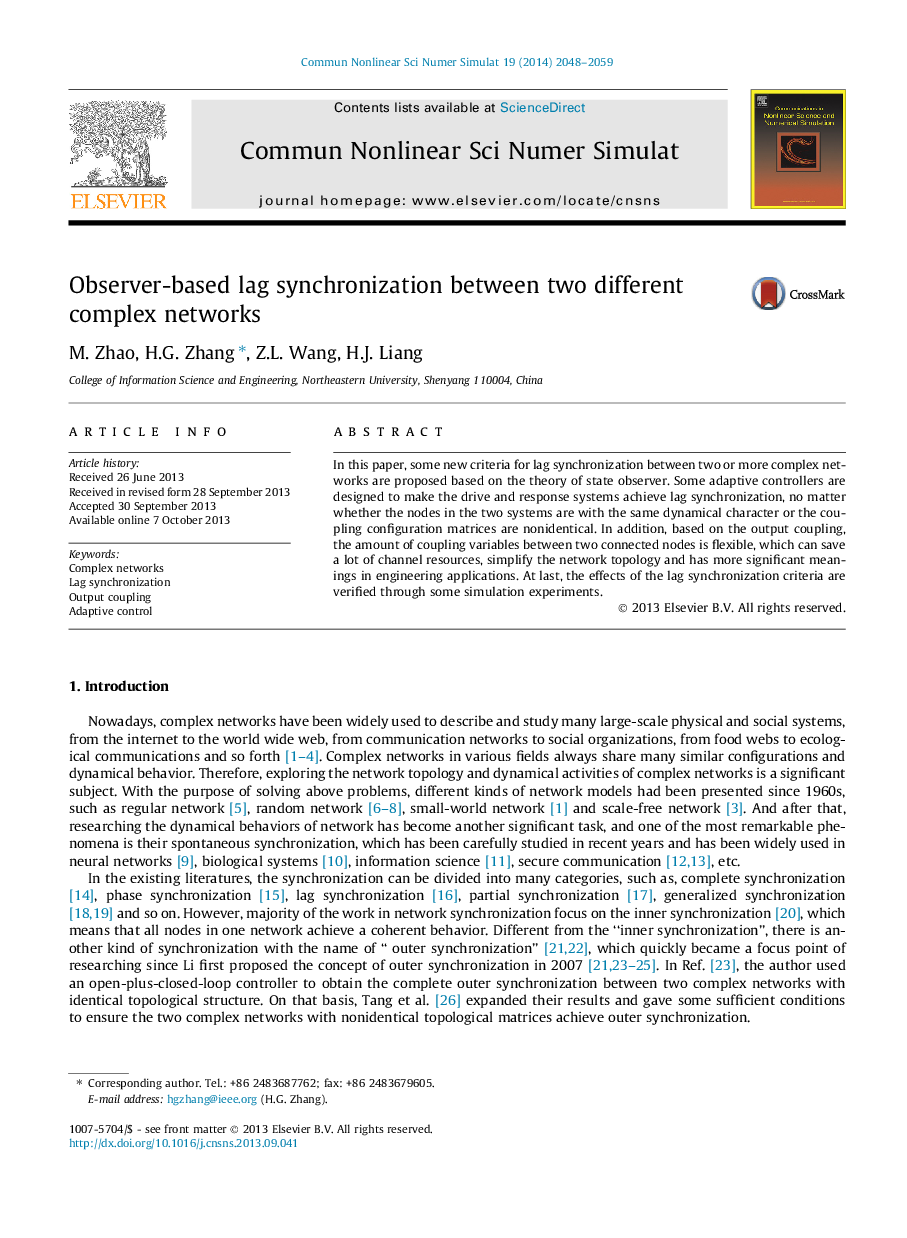| Article ID | Journal | Published Year | Pages | File Type |
|---|---|---|---|---|
| 755803 | Communications in Nonlinear Science and Numerical Simulation | 2014 | 12 Pages |
•The system models are based on the theory of state observer.•The method of output coupling is used to reduce the coupling state variables.•The nodes need not have the same dynamical characters.•The coupling matrices in the drive and response systems are nonidentical.
In this paper, some new criteria for lag synchronization between two or more complex networks are proposed based on the theory of state observer. Some adaptive controllers are designed to make the drive and response systems achieve lag synchronization, no matter whether the nodes in the two systems are with the same dynamical character or the coupling configuration matrices are nonidentical. In addition, based on the output coupling, the amount of coupling variables between two connected nodes is flexible, which can save a lot of channel resources, simplify the network topology and has more significant meanings in engineering applications. At last, the effects of the lag synchronization criteria are verified through some simulation experiments.
